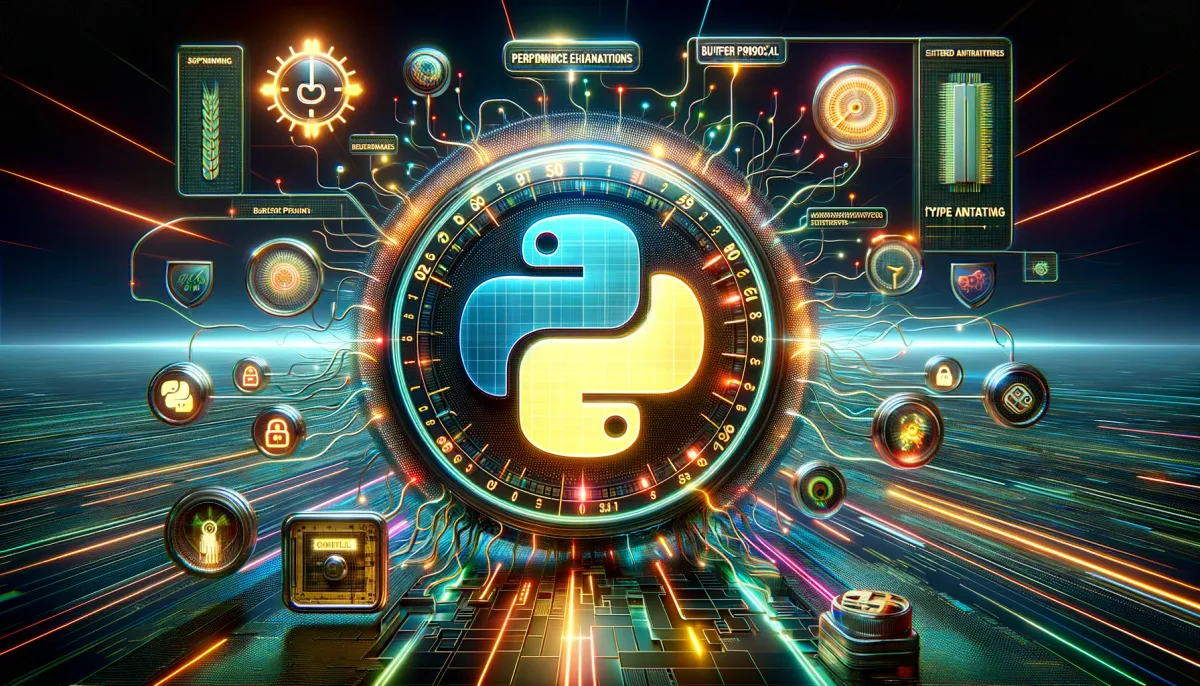Embracing the Future with Python 3.12: A Comprehensive Overview
Python continues to evolve, and the release of Python 3.12 marks another significant milestone in its journey.

Python continues to evolve, and the release of Python 3.12 marks another significant milestone in its journey. As a language known for its simplicity and power, Python has consistently been at the forefront of software development, data analysis, artificial intelligence, and more. The Python 3.12 series introduces a plethora of new features, optimizations, and improvements, making it an exciting upgrade for developers and organizations alike. Let's dive into what makes Python 3.12 a game-changer.
Performance Enhancements: A Leap Forward
One of the most anticipated aspects of Python 3.12 is its performance improvements. With an estimated 5% overall performance boost, this version promises faster script execution, reduced latency, and more efficient resource utilization. These enhancements are partly attributed to the inclusion of PEP 709 and support for the BOLT binary optimizer, which optimize Python's bytecode and runtime efficiency. Such improvements are crucial for compute-heavy applications, where even minor speed increments can lead to significant reductions in processing times and operational costs.
Innovative Features for Modern Python Programming
More Flexible f-String Parsing
PEP 701 revolutionizes how developers work with f-strings, allowing for more complex and previously disallowed expressions within these powerful string literals. This change makes code more concise and expressive, enabling developers to embed sophisticated logic directly within string declarations.
Buffer Protocol Support in Python
With PEP 688, Python 3.12 bridges a significant gap by allowing Python code to implement the buffer protocol. This enhancement enables more direct control over memory buffers, facilitating efficient data exchange and manipulation, particularly for applications dealing with large datasets or requiring high-performance data processing.
Debugging and Profiling Made Easy
The introduction of a new debugging and profiling API under PEP 669 equips developers with finer-grained tools to analyze and optimize their code. This API promises to uncover deeper insights into code performance, helping developers identify bottlenecks and inefficiencies more effectively.
Isolated Subinterpreters for Concurrent Execution
Perhaps one of the most groundbreaking features is the support for isolated subinterpreters with separate Global Interpreter Locks (GILs), as introduced in PEP 684. This feature paves the way for true parallel execution of Python code, potentially overcoming the longstanding limitations imposed by the GIL. It opens up new possibilities for Python applications to leverage multi-core processors more effectively, enhancing scalability and concurrency.
Enhanced Type Annotations and Syntax Improvements
Python 3.12 also brings significant advancements in type annotations and syntax, making code more readable and maintainable. The new type annotation syntax for generic classes (PEP 695) and the @override decorator (PEP 698) are just a couple of examples that illustrate Python's commitment to improving code quality and developer experience.
Embracing Change: Deprecations and Removals
With progress comes change, and Python 3.12 continues the tradition of pruning outdated features to streamline the language and its standard library. The removal of deprecated modules such as smtpd and distutils, along with various outdated functions and methods, reflects Python's focus on modernity and efficiency.
Conclusion: Python 3.12 Sets New Standards
Python 3.12 is more than just another update; it's a testament to the language's enduring adaptability and its community's commitment to excellence. Whether it's the performance improvements, the introduction of isolated subinterpreters, or the syntactic enhancements, Python 3.12 offers something for every developer.
As we embrace Python 3.12, we're not just adopting a new version of a programming language; we're stepping into the future of software development, armed with tools and features designed to tackle today's challenges while paving the way for tomorrow's innovations.





